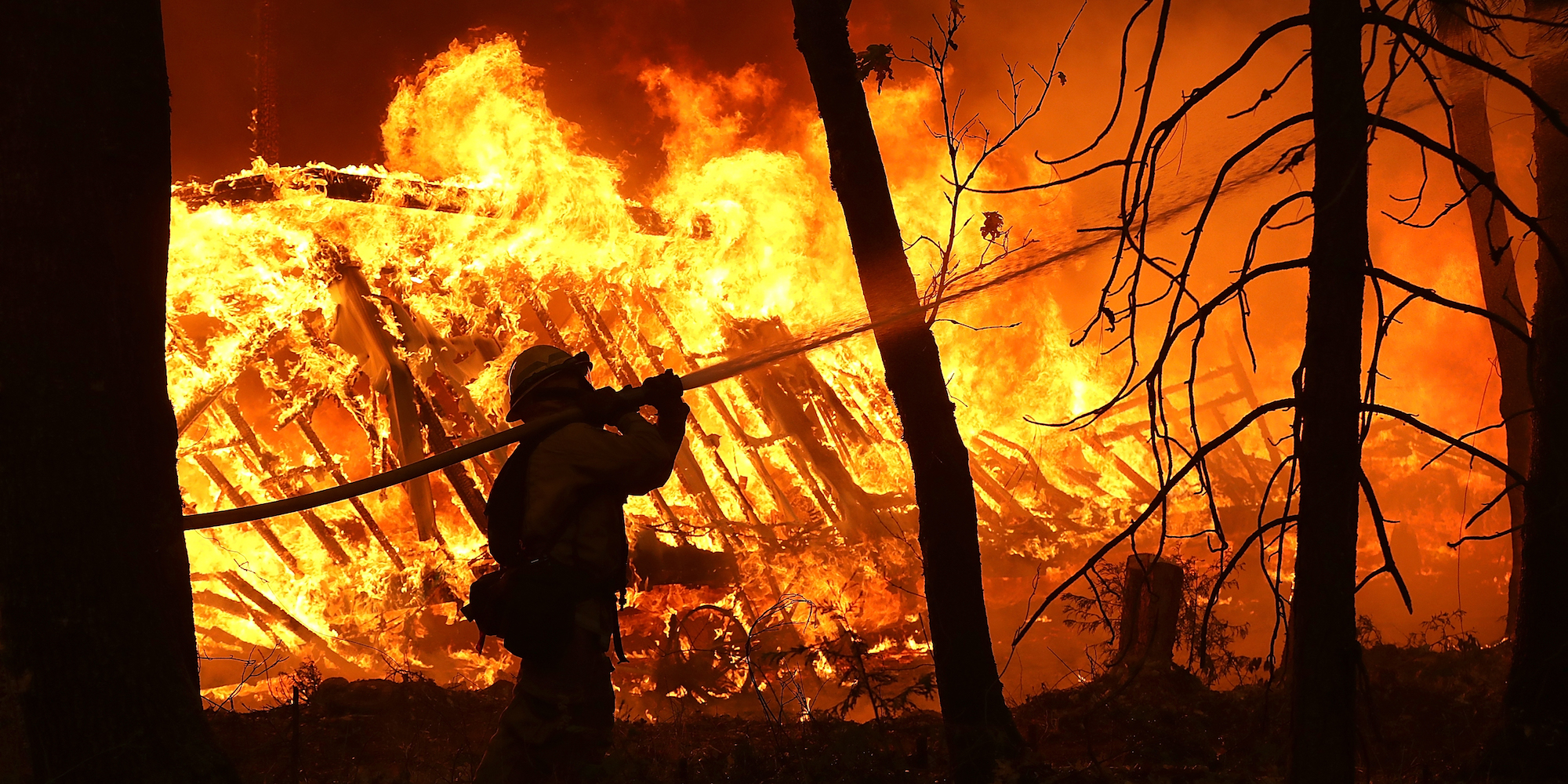- The spectacular collapse of Pacific Gas & Electric, which filed for bankruptcy protection on Tuesday, has perhaps made it the biggest corporate victim of a rapidly changing climate.
- Having estimated total losses from last year’s Camp Fire to be $16.5 billion, the reinsurance firm Munich Re called the fire the world’s most expensive natural disaster of last year, Reuters reported.
- PG&E’s huge liabilities for California wildfires demonstrate the increasing dangers of climate change to businesses that don’t adapt to climate change.
The spectacular collapse of Pacific Gas & Electric, which filed for bankruptcy protection on Tuesday, has perhaps made it the biggest corporate victim of a rapidly changing climate.
The fires that scorched thousands of acres of California land and killed scores of people have now all but destroyed the San Francisco-based utility, which buckled under about $52 billion in debt. PG&E has seen about 75% of its market capitalization wiped out, its CEO step down, its bonds rated junk, and its liabilities, some say, balloon to over $30 billion.
The reinsurance firm Munich Re called November’s Camp Fire the world’s most expensive natural disaster of 2018, Reuters reported, and the company estimates total losses from it to be $16.5 billion. While investigators are still unsure whether PG&E equipment started the Camp Fire, the company may be held liable even if not found negligent.
Read more: The loan market has a new reward – and punishment – system to force firms to be climate friendly
BlueMountain Capital Management, a PG&E shareholder, fired back at the company for declaring bankruptcy, saying in a statement that it was "deeply disappointed" that the board had "ignored calls from multiple parties to abandon its reckless and irresponsible plan to file for bankruptcy."
PG&E was cleared last week of responsibility for one of several wildfires in 2017, news that on Thursday sent the stock soaring more than 70% amid raised hopes that liabilities might be also limited relating to the Camp Fire, which was the deadliest wildfire in California's history.
Tuesday's bankruptcy plans sent PG&E stock down more than 4% in premarket trading.
A wake-up call for other companies
The conditions that enabled the fires, PG&E's (now departed) CEO said, were the result of global climate change. Experts agree.
PG&E's fate is a troubling sign for businesses that could meet the same outcome, and the saga has turned into a wake-up call to other businesses affected by the fallout from climate change, which scientists say is behind conditions, like droughts in the Western US, that are sure to make such extreme disasters more likely.
"The physical risks posed by climate change are both indiscriminate and unpredictable," said Jeanne Martin, a senior campaigns officer at ShareAction, a UK-based charity that promotes environmental causes.
Investors are increasingly eager to get better visibility of the risks. A recent survey by the global environmental-impact nonprofit CDP found that 85% of companies were citing physical climate risks as factors in their decision-making.
Risks come in many forms
But it's not just extreme weather events like fires and hurricanes - the risks come in many forms. The possibility that governments will introduce drastic shifts in policy as a result of climate change could put some industries under increased threat.
Commodity giants such as Shell, BP, and Glencore are among those at risk from climate-driven demand for more ecological energy sources, according to ShareAction.
Another threat: the possibility of highly polluting companies being found liable for their role in climate change and the exacerbation of extreme weather. For example, the Philippines Human Rights Commission is investigating the responsibility of 47 "carbon major" companies for climate-related human-rights impacts.
"PG&E is unlikely to be the last company to fall victim to climate change unless we reduce the systemic risk it poses," ShareAction's Martin said.

